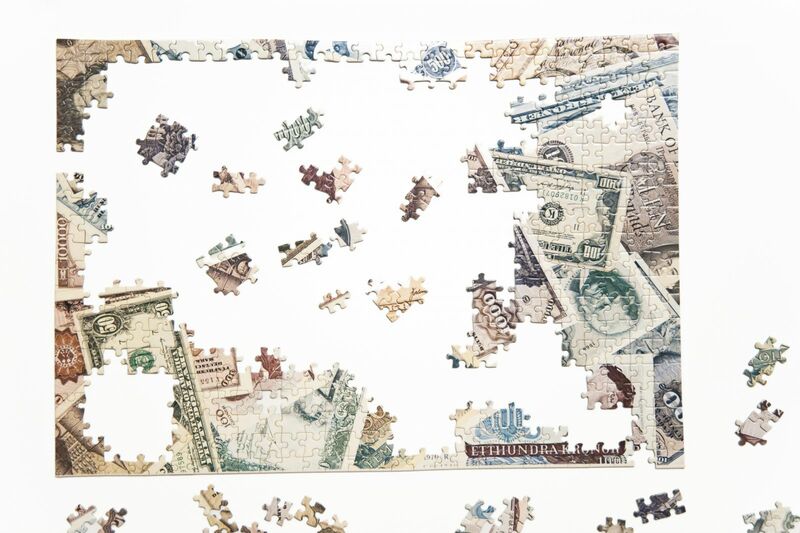
The dollar index (DXY00) on Friday fell by -0.52%. The dollar retreated on Friday after economic news showed the U.S. Nov S&P manufacturing PMI fell more than expected. Also, strength in the euro Friday weighed on the dollar after the German Nov IFO business climate rose more than expected to a 4-month high.
Friday’s U.S. economic news was mixed for the dollar. On the bearish side, the Nov S&P manufacturing PMI fell -0.6 to 49.4, weaker than expectations of 49.9. Conversely, the Nov S&P services PMI unexpectedly rose +0.2 to a 4-month high of 50.8, stronger than expectations of a decline to 50.3.
The markets are discounting a 5% chance for a +25 bp rate hike at the next FOMC meeting on Dec 12-13 FOMC and a 13% chance for that +25 bp rate hike at the following FOMC meeting on Jan 30-31, 2024. The markets are then discounting a 23% chance for a -25 bp rate cut at the March 19-20, 2024, FOMC meeting and a 52% chance for that same -25 bp rate cut at the Apr 30-May 1, 2024, FOMC meeting.
EUR/USD (^EURUSD) on Friday rose by +0.39%. Dollar weakness Friday supported moderate gains in the euro. Also, an increase in the German Nov IFO business climate to a 4-month high was bullish for EUR/USD. In addition, Friday’s jump in the 10-year German bund yield to a 1-1/2 week high strengthened the euro’s interest rate differentials and supported the euro. Strength in the euro was limited by Friday’s dovish comments from ECB President Lagarde, who signaled she supports a rate hike pause by the ECB.
The German Nov IFO business climate rose +0.4 to a 4-month high of 87.3, weaker than expectations of 87.5.
ECB President Lagarde said, "We have already done a lot on rates," and the ECB is now at a point where it can pause and assess the impact of its policy tightening.
ECB Governing Council member Villeroy de Galhau said, "Excluding surprises, I don't think the ECB will raise interest rates again."
ECB Governing Council member Holzmann said there's an "equal probability" of an ECB rate hike or cut in the second quarter of 2024.
USD/JPY (^USDJPY) on Friday fell by -0.05%. On Friday, the yen posted modest gains against the dollar. Friday’s Japanese consumer price news showed price pressures remain above the BOJ’s 2.0% target, which may prompt the central bank to exit its ultra-easy monetary policy sooner than expected. Gains in the yen were limited Friday due to higher T-note yields and news that showed Japanese manufacturing activity this month contracted at the steepest pace in 9 months, a dovish factor for BOJ policy.
The Japan Sep leading index CI was revised upward by +0.2 to 108.9 from the previously reported 108.7.
Japan's national CPI rose +3.3% y/y, weaker than expectations of +3.4% y/y. Nov national CPI ex-fresh food and energy eased to +4.0 % y/y from +4.2% y/y in Oct, weaker than expectations of +4.1% y/y and the slowest pace of increase in 7 months.
The Japan Nov Jibun Bank manufacturing PMI fell -0.6 to 48.1, the steepest pace of contraction in 9 months.
December gold (GCZ3) Friday closed up +10.20 (+0.51%), and Dec silver (SIZ23) closed up +0.653 (+2.76%). Precious metals prices on Friday settled moderately higher, with silver posting a 2-1/2 month high. A weaker dollar on Friday was bullish for metals prices. Also, dovish comments Friday from ECB President Lagarde, who said she favors a pause in ECB rate hikes, were supportive for precious metals. On the negative side for precious metals on Friday was an increase in global bond yields.
On the date of publication, Rich Asplund did not have (either directly or indirectly) positions in any of the securities mentioned in this article. All information and data in this article is solely for informational purposes. For more information please view the Barchart Disclosure Policy here.





